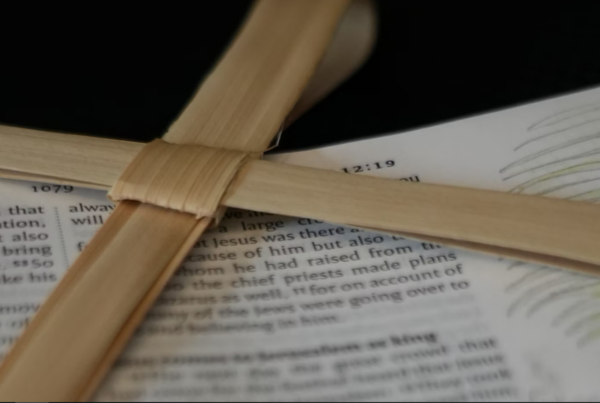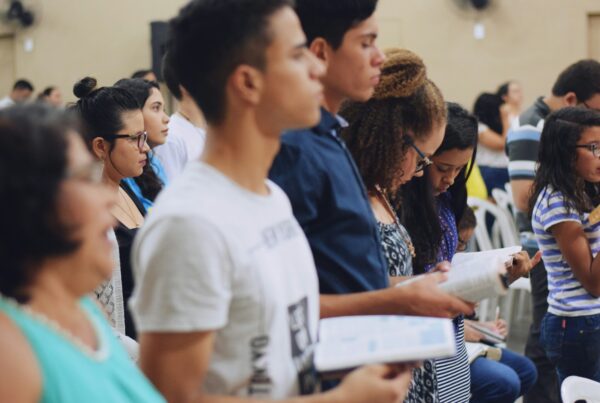I accidentally found myself pastoring two churches. I say accidentally because this was never my expectation. In 2017, I was called by the Altamont Reformed Church in Altamont, New York, from a six-year service in the Reformed Church in America’s Classis of Wisconsin. Altamont Reformed, founded in 1888, shares an interwoven history with the Helderberg Reformed Church, founded in 1767. In fact, for the first years of Altamont Reformed’s life, it was a collegiate church with the Helderberg church before it was organized separately. These churches have a fascinating history in this area, and I’d love to tell you about it sometime.
Fast forward to 2021: the Helderberg church found itself vacant, they did what all churches do, and they began to think about what the future might look like for them. Like most churches in Upstate New York, especially those in rural areas, both congregations are modest in size, though certainly alive. They knew that fully supporting a minister on their own was not sustainable for very long, and rather than try to find a part-time pastor (let’s be honest: there are not really part-time pastors; there are pastors who are paid less), the Helderberg church approached the Altamont church with a proposal: what if we form a multiple parish together?
It made sense. Our churches are four miles apart, the contextual realities are intertwined, our histories are knit together, and we already participated together in community services. Thus began the process of becoming a multiple parish—a mutually beneficial structure in which I now pastor two churches.
What is a “multiple parish”?
A multiple parish (sometimes called a “yoked” parish, though I don’t especially like that term) is a very old model of ministry. In fact, for a lot of churches, if one goes back into the history, one will find that at some point, it had been a multiple parish with at least one other church. Whereas a collegiate church has one consistory (and thus forms one church) with multiple congregations (the term “multisite” is more trendy these days), a multiple parish is a group of two or more churches that share one or more ministers. Each church has their own consistory, budget, programs, and the rest; they just share a minister. As a church polity teacher, I was well aware of the existence of this model, and I have had friends and colleagues who have served multiple parishes of varying structures. So I had a conceptual framework for this, but for the folks at Altamont Reformed, the suggestion of this model felt like it came out of left field.
The idea that every church needs to have its “own” pastor is a rather modern concept—and one that is far less sustainable in late modernity. With the increasing secularization and pluralization, as well as rising costs of living and decreasing financial resources, the social setting of churches has changed and is continuing to change. In addition, for many churches, the costs of a minister are substantial. Some churches have tried to find part-time or bi-vocational pastors, and for some, this can work well, but for many others, it is easier said than done. Some have decided that they will never have a minister as a pastor and have settled in with a preaching elder or commissioned pastor. But other churches have been returning to a tried and true model of pastoral ministry, such as the multiple parish.
Because of this conceptual framework that I already had in my mind, when this was suggested, I felt strongly that this would be in the best interest of both churches in the future. First, it would help to connect these two churches whose histories are knit together. Second, it would help alleviate the financial pressures from both churches of having to fully support a minister on their own. Third, it would allow them both to have someone who is in ministry full-time.
Some may wonder why a multiple parish and not a merger. Merging churches is easier said than done. The Altamont and Helderberg churches are similar in a lot of ways, but they also had—and have—their own identities and own ministries in their communities. Pushing for a merger right away would have done more harm than good. There are hosts of reasons why churches may still remain separately organized churches, but this doesn’t mean that they cannot engage in ministry together.
While I had a conceptual framework, the consistories, understandably, did not. But both consistories responded admirably. They were both open to considering something that they would not have considered only a few months before, and they were open to doing something that none of them had ever experienced and was outside of their mental model of what church is like. Both consistories knew that trying a multiple parish was high-risk/high-reward. And both took deliberate, thoughtful steps toward discerning a pathway forward.
Related: How adaptive leadership can help churches embrace mission in uncharted territory
How does pastoring two congregations work?
The service times at the two churches were different, but one church offered to move its service time 30 minutes earlier. So I’m at one church at 9:00, then at the other church at 10:30. I prepare one sermon for both churches, or two with only minor differences. One church has me before worship; the other, after worship. The church that kept their worship time was used to the pastor leading Sunday school for adults before worship, but that wouldn’t work under this multiple parish model. So, now we do adult education on Sunday evenings with both churches together, and that has been a wonderful thing for everyone. We routinely have 20-30 people on Sunday evenings. We do a series at one church, and then we go to the other church for another series. Some special services are combined; other times, services and special activities are moved to accommodate both churches.
I still live in the Altamont parsonage, and most of my stuff is in my study in Altamont, so most of my time is there, but I am at Helderberg one day a week and then other times by appointment. With modern technology, people can get in contact with me when needed. Because I am installed at both churches, I am the president of both consistories, which means that I have two consistory meetings each month. This all works, but also, the hard reality is that I am one person and cannot be at both churches at the same time. We haven’t had any conflicts yet when this was a problem, but it is something that we all have to keep in mind and be clear about expectations.
Because there are always more pastoral care concerns than one person can handle, I do pastoral care by triage, and this continues. So the elders have to take a more active role in the care of each congregation. Oh, and my family? They are members of one church. They don’t travel with me. They deserve to have a church home, as well, and so I was clear about that.
A big part of forming a successful multiple parish is to try to make sure one church isn’t always making sacrifices for the other. Both churches have to give and take a bit.
What about costs?
We found a financial framework that worked for both churches and that also worked for the classis. Each church pays its respective percentage of my salary, benefits, retirement, and parsonage utilities. I was clear, however, to everyone that the financial division is rather artificial. That is, the churches cannot count my hours spent at each place and expect that it will work out to a certain percentage. That’s just not how the pastorate works. Some weeks one church has extra pastoral needs and they get more time, and another week it will be the same for the other church. I just try hard to ensure that both churches feel that I’m connected with them.
A framework of gains, not losses
We sought to frame the multiple parish set-up, for ourselves and others, as not dividing my time and energy between two churches, but expanding the scope of my pastoral charge. In this way, we could help folks see that Altamont Reformed wasn’t losing their pastor, nor were they getting “less” of their pastor. I was still in full-time ministry, just an expanded scope. We also tried to help folks see that doing this before each church found themselves at a crisis moment allowed us to be more forward thinking.
And we tried to show that the gains would be more than the losses. We would gain a relationship with another church, and we would be able to take some stress off the budget and allow our church to explore opportunities that we might not otherwise have been able to engage in. Most importantly, neither consistory saw this as a last-ditch grasp on life, but rather another chapter that we could freely walk into that would be different, but we all hoped would hold opportunities and possibilities for mission and ministry in the future.
We saw this as an opportunity for life and flourishing for our churches, and I think this was very important.
On the agenda of each consistory is always an item checking in with how things are going. I ask this each month to each consistory, and not a single person on either consistory has, or has heard, any grumblings within the respective congregations. This is not to say that there won’t be issues that may arise, but after nearly a year, neither church wants to pull the plug.
Lessons along the way
Forming a multiple parish was a process without a clear roadmap, and it felt like we were making the path while walking it. There’s a long story about how this all happened, but here is the shorter version with some learnings along the way, for the benefit of other churches that may want to explore the multiple parish model.
Learn from others
While every context is different, the very first thing I did was to contact people who I knew who were already doing this. I asked them how it came to be, how it works, what they like, what they don’t like. They also graciously shared their calls/contracts with me so that the Altamont and Helderberg churches didn’t have to begin with nothing but could have something tangible from which to work.
I don’t think starting a multiple parish could have worked without getting advice and counsel from others who were already doing this kind of ministry. So don’t try to figure it out all alone. It’s fashionable now to think that we’re on the cutting edge or doing something the church has never seen before. We are neither of those things. While circumstances certainly won’t be exactly the same across time or contexts, we are not that special or unique. There’s probably someone already doing something much like what you’re potentially looking at. Find them and reach out to them.
Communication is key
The request to share a full-time pastor came shortly before Altamont Reformed’s annual congregational meeting. While we didn’t know if this would work or what form it would take, the consistories needed to be open and transparent with the congregations. And so we did that. We could share as much as we knew, and for many things we could say, “we don’t know yet.” I wrote pastoral letters to the congregation I was serving and used my monthly newsletter columns to keep people updated, even if the update was “we don’t really have much of an update.” I am convinced that this was a crucial part of the process, as it built trust from the beginning.
We also invited feedback and questions. I had many conversations over the period of exploration and discernment with individuals and small groups who had concerns. Both churches had a slightly different process for how to communicate and engage with the congregation, and that is certainly fine. The big thing is that communication is essential.
Don’t rush it
Big changes, especially those related to church and structure, require time to adequately process the change. All change (even good change) brings loss, and we cannot minimize that reality. Everything in our world right now moves at a breakneck pace, but the church doesn’t (and shouldn’t). The consistories of both churches decided that, if this was to work, there needed to be a strong and broad consensus within the congregations. And so we took some time, and we also took some breaks so that this wasn’t always on our minds when things were getting difficult. And then we came back. It takes time for people to digest such a big change, and when the world stops spinning, then folks are able to see more clearly. Trying to rush something like this is only a recipe for disaster.
How we decide is as important as what we decide
We also had to address how we would make the decision. Some assumed the congregation should vote on this proposal. But in the end, the consistory decided that this decision belongs to the consistory, the consistory cannot relinquish it to anyone else, and a congregational vote has a great divisive potential. We wanted to involve the congregation, we wanted their feedback, and most of all, we wanted their support, broadly. Not a majority. We wanted consensus of “let’s try this,” even if not full-throated enthusiasm.
This was a step of faith for all of us, and regardless of how much planning you try to do, no one can know if it is actually going to work or not. We (broadly) often run things by majority rule and assume that is the best way, but many times, it is not at all the best way. So the consistory would communicate, and this communication would be two ways, with ample opportunities for feedback and discussion. But in the end, the consistory would make the decision. And when it came time to vote on the final changes of implementing a multiple parish, the vote was unanimous.
Concluding Thoughts
More than one church being served by a single minister is historically a very normal arrangement, and as we move into a new future in which churches will be smaller and finances tighter, this presents a very viable option for many churches, perhaps preferable to trying to find a minister who can afford only partial support. It does add some extra to my schedule—an extra consistory meeting each month and another service on Sunday mornings—and there are weeks that are very busy, and there are weeks where I can take a breath a bit. I don’t have any regrets about what we did or how we handled it. It wasn’t always smooth or straightforward, but I still think that this was the right thing, and it came at the right time, that both churches could enter into this proactively and with forward thinking, rather than just reactively.
Matthew van Maastricht
Matthew van Maastricht is a pastor and academic, pastoring the Altamont (Altamont, New York) and the Helderberg (Guilderland Center, New York) Reformed churches and serving as an adjunct instructor and Fellow of the Reformed Church Center at New Brunswick Theological Seminary.



